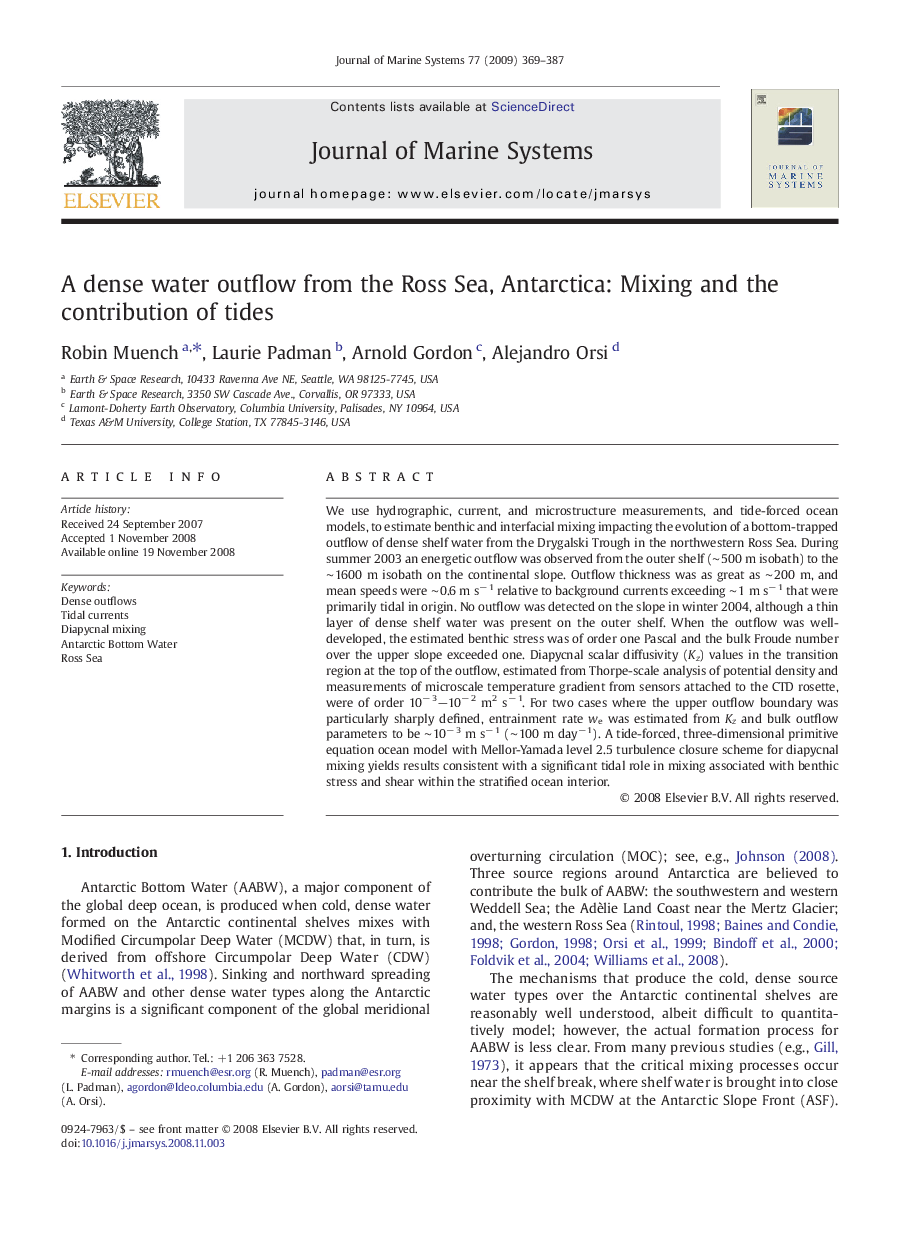| Article ID | Journal | Published Year | Pages | File Type |
|---|---|---|---|---|
| 4548656 | Journal of Marine Systems | 2009 | 19 Pages |
Abstract
We use hydrographic, current, and microstructure measurements, and tide-forced ocean models, to estimate benthic and interfacial mixing impacting the evolution of a bottom-trapped outflow of dense shelf water from the Drygalski Trough in the northwestern Ross Sea. During summer 2003 an energetic outflow was observed from the outer shelf (â¼Â 500 m isobath) to the â¼Â 1600 m isobath on the continental slope. Outflow thickness was as great as â¼Â 200 m, and mean speeds were â¼Â 0.6 m sâ 1 relative to background currents exceeding â¼Â 1 m sâ 1 that were primarily tidal in origin. No outflow was detected on the slope in winter 2004, although a thin layer of dense shelf water was present on the outer shelf. When the outflow was well-developed, the estimated benthic stress was of order one Pascal and the bulk Froude number over the upper slope exceeded one. Diapycnal scalar diffusivity (Kz) values in the transition region at the top of the outflow, estimated from Thorpe-scale analysis of potential density and measurements of microscale temperature gradient from sensors attached to the CTD rosette, were of order 10â 3â10â 2 m2 sâ 1. For two cases where the upper outflow boundary was particularly sharply defined, entrainment rate we was estimated from Kz and bulk outflow parameters to be â¼Â 10â 3 m sâ 1 (â¼Â 100 m dayâ 1). A tide-forced, three-dimensional primitive equation ocean model with Mellor-Yamada level 2.5 turbulence closure scheme for diapycnal mixing yields results consistent with a significant tidal role in mixing associated with benthic stress and shear within the stratified ocean interior.
Related Topics
Physical Sciences and Engineering
Earth and Planetary Sciences
Oceanography
Authors
Robin Muench, Laurie Padman, Arnold Gordon, Alejandro Orsi,
